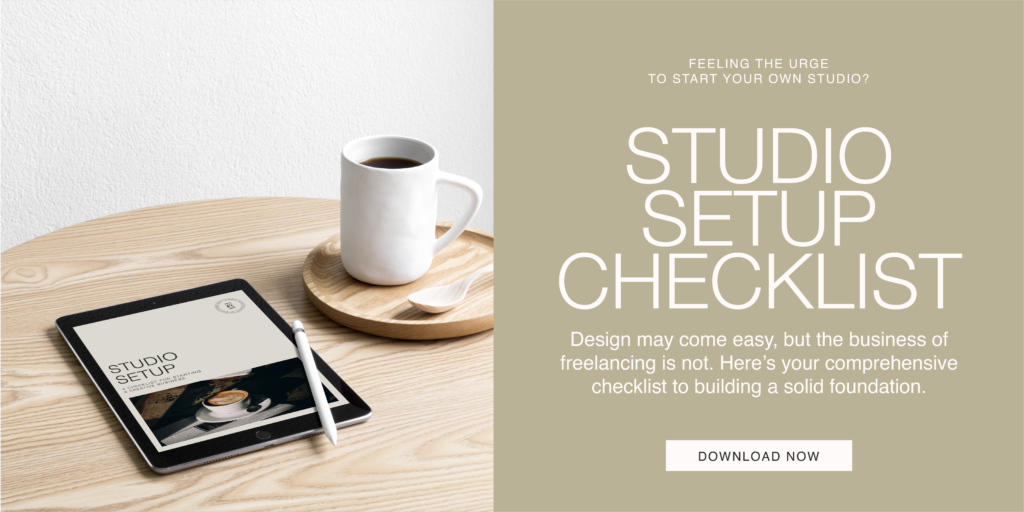“Alone we can do so little. Together we can do so much.”
– Helen Keller
It’s 9:15 a.m., and I’m two cups of black coffee in to my Monday morning. Only a few months ago, I would have gone straight for my inbox, cringing as I watched the number that used to sit peacefully in the single digits stretch eagerly into the double. But now, I have a virtual team and can confidently delegate the tasks that otherwise would keep me up at night.
My story started the day I begrudgingly acknowledged that my one-woman show needed extra help. I wasn’t planning on growing my business, but sometimes growth is a solution to a desperate situation. At least it was for me.
Let me start by saying that a team can take various forms: project-based independent contractors, virtual assistants, and actual payroll employees. However your virtual team looks, it’s crucial to think about how they fit within your business and brand values.
I learned a lot the first time I started hiring a virtual team, and as I’ve scaled up and scaled down over the past few years, I’ve come to realize there are a few factors that need to be addressed before bringing someone on.
1. Have a vision for how you want your business to grow.
When my business coach first suggested that I bring on a second designer, I wouldn’t say that I initially liked the idea. I thought what I REALLY needed was a virtual assistant to manage my email inbox. But while I struggled to do everything myself, I noticed my client projects were starting to suffer.
While I was looking to hire based on my present situation, my coach was looking towards my future. Don’t hire a team just to put a bandaid on a system or business that isn’t sustainable. Think about how each new team member is building towards a future goal.
Brand Vision
Even if you don’t know exactly where you’re going, it’s important to have a general idea of your business goals before your team grows — because you WILL hire the wrong people if you don’t have a vision for the future. It took me a while to learn this.
I blindly invested in new employees while trying to figure it out, hiring for the wrong roles at the wrong times and spending way too much money along the way.
Now I know that my goal for growing Drop Cap is to serve more small businesses both internally and externally. With a design team, I can work with more clients and come up with better creative solutions. I also love being able to provide opportunities for other designers and creatives that I truly love, and in turn, get to watch their businesses grow, too.
2. Understand your strengths, and use them to mentor your virtual team.
After you’ve thought about the vision for your brand, you need to take inventory of what you’re bringing to the table.
What do you do really well in your business?
I enjoy creating a brand’s identity – that unique story that differentiates one creative business from all the others. I’ve worked with enough small businesses in this stage of my studio to know what will work and what won’t. It turns out that I have no problem articulating what I want to see and explaining design solutions in a way that makes sense to non-designers.
My Strengths
I can easily connect the dots for multi-passionate businesses, I LOVE researching ideas, and my personality is naturally geared to think in the realm of identity and communication. This strength makes me a good fit for working with a creative team and facilitating creative conversations.
If you’re new to identifying strengths, I suggest taking at least one personality test, (I’ve taken so many I’ve lost count)! My favorite for learning your leadership strengths is the StrengthFinders test, and there’s an accompanying book that will give you further insights into your results.
3. Identify your weaknesses, then start hiring team members to fill in.
And while you’re identifying your strengths, go ahead and figure out your weaknesses, too.
For me, the very beginning and end of a project can be challenging. It takes me a minute to gain inspiration and momentum on a new brand, and then I sometimes burn out towards the end. But I love the middle – that’s my happy place.
Since our design team fully collaborates on every project, I get to step in where I’m most comfortable; challenging ideas, presenting new ways of solving problems, and editing each design down to its most essential parts. Now, I get to bounce ideas off my team when I reach an obstacle or have a creative block.
I had no idea I could love the creative process this much. Now, I can focus on the areas where I’m strongest, and get additional support to develop an identity into an iconic brand.
4. Define your company culture.
If you don’t define your culture at the beginning, it will define itself. And unfortunately, it could turn in a direction where your team feels undervalued and overworked.
Culture can mean many things (like in-studio ping pong tables and fresh cold brew), but since my team works virtually, we have our own way of maintaining unity while working apart.
Our (Virtual) Culture
We check in with each other consistently, switch tasks when we feel uninspired, and let someone else take a stab at it for a minute. We openly share our honest opinions and ask for help when we need it. And for that space to remain open and safe, I had to take the lead and be vulnerable.
As the leader of your team, be bold in your vulnerability. Be trustworthy. Don’t make excuses. Own your mistakes (and your missed deadlines)! Protect the health and happiness of those who work for and with you.
5. Anticipate growing pains.
This one was hard, and sometimes it continues to be complicated.
There are still clients who don’t understand why I’m not personally doing every task of the entire project, and I still feel guilty some days because I have gotten so used to being a freelancer. The reality is that I handpick designers, project managers, and developers who are better than I am.
Real Talk
My design team’s talent intimidates me and makes me feel like an amateur sometimes, and I LOVE it! Because in reality, I know that when clients come to Drop Cap and get to work with my team, they will have the most incredible experience and a brand that exceeds their wildest expectations.
As we’ve grown, I’ve had to be courageous in explaining why things are shifting and confidently back my team’s talents and qualifications. I’ve sometimes had to apologize while we figure out the kinks in our new systems and when we accidentally drop the ball.
I’ve had to take on a few extra nights of working late hours to invest in my team’s growth. Sometimes it makes me feel incredibly vulnerable. Sometimes we lose potential clients – but I remind myself that what we are doing is a better way of doing things, and I’m working towards the long-term. We will get there.
6. Train before you fully delegate.
This tip is a big one! I didn’t realize how much training it takes to teach someone how to work inside your business. As independent entrepreneurs, most of us keep a lot of our processes and plans in our heads.
Unfortunately, your team will not be able to read your mind.
Standard Operating Procedures (SOPs)
That’s why it’s so important to start tracking your process. Write out the flow of working with a new client. Start naming files consistently. Be overly patient those first few weeks – not only are you getting used to working with a new person, but THEY are also getting accustomed to working with YOU.
If you don’t have a way to share your process, I suggest using the loom Chrome extension to record your screen while you share a process and a project management system like Asana or Notion to create project templates. Your team will thank you!
7. Have a plan to support your team virtually.
I love to work by myself. I also get distracted easily.
But our studio’s culture is SO important to me because I want to build a team that feels passionate about where we’re going and why.
Initially, I didn’t think about things like “check-ins” and expectations. I wanted to wing it. Now, I’ve set up a Slack channel so that my virtual team feels like they can get in touch with me at any time, but also develop relationships with each other because that stuff is IMPORTANT!
This studio is not a one-woman show. You have to show up not just as a manager but also as a friend. It goes so much further than providing the right resources; it’s providing support and empathy, and encouragement. It’s showing up.
8. Invest in business tools.
Finding the right business tools is a game-changer. Back when I was solo, I tried to be creative with project management systems (and project management is not intended to be creative)!!!
I would reinvent the wheel all the time, reworking things that were already working and fixing things that didn’t break. But when you start to build a virtual team, you can’t do that. You can’t redefine your business’s structure every three months, and that’s a good thing.
Having multiple people using a system makes it less tempting to change it. Now that we are all on an organized platform, we can work collaboratively in an efficient and reliable system. We’re able to work on so many more projects simultaneously – and this would never have been possible when I was still doing everything on my own!
9. Create digital templates for a virtual team.
This one wasn’t as hard for me since we provide branding services. I already saw this as something important.
But I know that for a lot of you, it can come as a shock the first time a social media or blog post goes out, and it’s NOTHING like what you had in mind!
It is so important to maintain your brand’s integrity – and integrity goes so much further than ethics. Maintain what you’ve built – the look, the tone, the message, the experience. If you have a certain way to present your products, it’s important to create standards and templates before delegating.
10. Be consistent and intentional.
These are by far the most important lessons I’ve learned. At the end of the day, people are more important than deadlines or opportunities. Treat your team with respect, generosity, and kindness, just as you would a client.
Don’t ask for more than you would be willing to give. Don’t withhold payment, ignore emails, or forget important dates (like birthdays)!!! Ask about them as a person, not just as a service provider.
Be appreciative of the work they do to grow your business. Stand up for your team with clients and support them in maintaining boundaries. How can you help them to succeed?
Be dedicated to improving the lives of every person you encounter – most importantly, the lives of your team members. I remember my mom once gave me some dating advice that seems to relate to building a team as well — “Even if things don’t work out, be dedicated to leaving that person better than you found them.”
Start here
Growing your business will mean that you bring other people into the picture at some point. You will be able to gain a little white space in your life by adding people to your virtual team. When your time comes, I hope you strongly consider these ten lessons as you begin the process.
In the meantime, here’s a helpful checklist for building your creative studio.

If you could use some help preparing to hire your first team member, or have big growth goals for the months ahead, consider signing up for one of our coaching packages. Having a coach during the hiring and business-building process was invaluable to me, and I’d be happy to help you one-on-one as you pursue your dreams.



